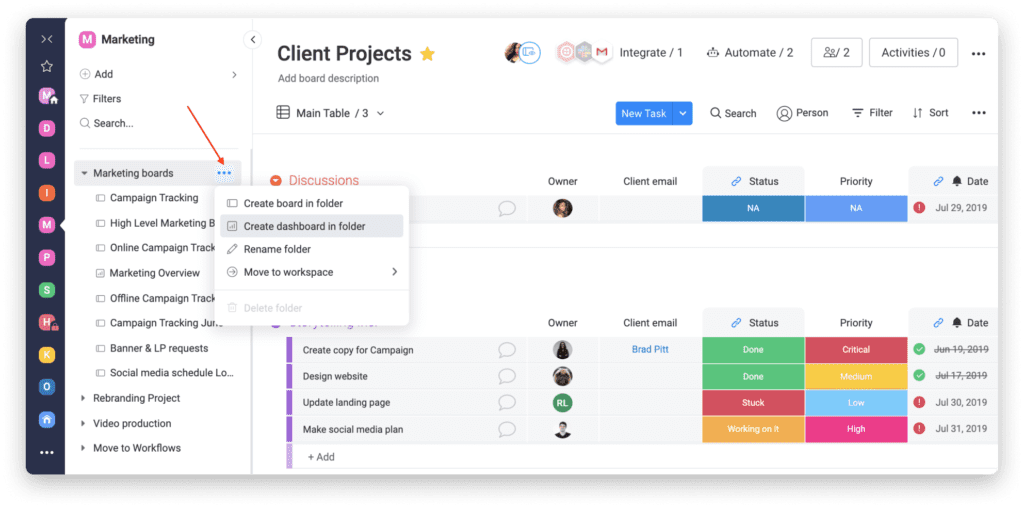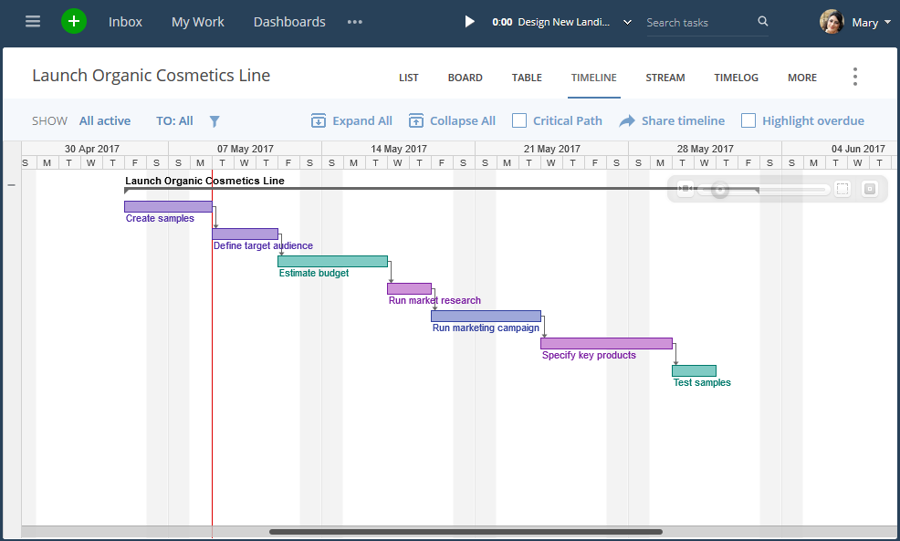Are you interested in learning more about the Scrum project management and development framework? Then keep reading, as we will define what Scrum is, list Scrum values, Scrum team members, Scrum events, and more. And to help you make the most out of the Scrum framework, we will also reveal some of the best Scrum software and tools for developers on the market.
Reading: How to Become a Project Manager
What is the Scrum Framework?
Contrary to popular belief, Scrum is not a methodology, as it is much simpler than some massive collection of connected, mandatory pieces. Instead, it is a lightweight framework that uses the scientific method of empiricism to help people, software development teams, and organizations adapt as they go to tackle and solve complex problems in a creative and productive manner. These adaptive solutions make it much easier to deliver high-value products, such as software applications, that are on time and have the most modern, up-to-date features possible.
While we will discuss Scrum events in more detail shortly, here is the basic breakdown of how the framework operates:
- A product owner lists and details all the work that must be completed to solve a complex problem in the product backlog.
- During a sprint, the Scrum team converts some of that work from the product backlog into an increment of value.
- The sprint results are inspected by the team and stakeholders so adjustments can be made for the next sprint.
- Repeat steps 1-3.
Again, if some of the terms listed above seem unfamiliar, do not fret, as we will define them shortly when discussing Scrum events.
Reading: Top 5 Project Management Certifications
What are Scrum Values?
The official Scrum Guide was revised in 2016 to include the five following values that make up the framework:/p>
- Courage: Scrum team members rely on courage to make the right decisions and tackle challenging problems head-on.
- Focus: Everyone remains focused on the Scrum team’s goals and the work to be completed during each sprint.
- Commitment: Everyone commits on a personal level to help the Scrum team reach its goals.
- Respect: Every Scrum team member respects one another’s ability to be an independent and capable person.
- Openness: The Scrum team and stakeholders make a pact to be transparent about all of the work and any possible challenges that may arise along the way.
Looking at those five values, it comes as no surprise that Scrum ditches the typical programmed, algorithmic approach to solving problems and replaces it with a heuristic one that respects team members’ abilities to self-organize and learn lessons as they go.
What is a Scrum Team?
A Scrum team is a small group of people that make up the fundamental unit of the framework. There are no hierarchies or sub-teams involved. It is a close-knit unit of professionals that focuses on a single objective at a time, otherwise known as the product goal. The typical Scrum team consists of:
- One Scrum master
- One product owner
- developers
What is a ScrumMaster?
As its name suggests, the Scrum Master is an expert in the framework who is responsible for ensuring that the team effectively follows Scrum principles as outlined in the official Scrum Guide. They accomplish this goal by helping everyone involved fully understand Scrum theory and practice.
A Scrum Master assists the Scrum team in many ways, such as:
- Giving the team all the necessary tools to create high-value increments.
- Offering coaching on cross-functionality and self-management.
- Removing any obstacles to the team’s progress.
- Making sure that all Scrum events are executed in a productive, positive, and timely manner.
The Scrum Master also assists the organization in many ways, such as:
- Connecting Scrum teams with stakeholders.
- Advising and planning Scrum implementations.
- Accelerating Scrum adoption within the organization via training, coaching, and leading.
- Helping stakeholders and employees understand how Scrum solves complex problems.
The Scrum Master’s responsibilities go even further, as they also help the product owner by:
- Creating empirical product planning in complex environments.
- Facilitating collaboration with stakeholders.
- Ensuring product backlog items are clear and concise.
- Developing techniques for effective product backlog management and product goal definition.
Reading: Ten Scrum Master Interview Questions You Should Know
What is a product owner?
The product owner is the one person responsible for maximizing the value of the product that comes from the Scrum team’s work. Beyond that, they are also responsible for executing product backlog management, which details:
- Creating and relaying the product goal.
- Creating product backlog items that are clear and easy to understand.
- Making sure that the product backlog is visible, accessible, and understood.
- Ordering items from the product backlog.
Whether the product owner completes all of those tasks personally or delegates them does not matter, as they are responsible in the end. While one person, the product owner may represent multiple stakeholders. If anyone wants to change the product backlog, they will have to convince the product owner to do so.
What is a developer?
A developer is the Scrum team member tasked with creating specific aspects of usable increments during each sprint. Scrum developers are typically responsible for:
- Developing a plan for the sprint.
- Adapting the plan as needed until the sprint goal is reached.
- Ensuring quality meets the definition of done.
- Keeping other developers accountable.
Reading: Project management methodologies
What are Scrum Events?
There are several Scrum events that teams who adopt the framework must stick to:
- sprint
- Sprint planning
- Daily Scrum
- Sprint review
- Sprint retrospective
What is a sprint?
A Scrum sprint is where ideas are converted into value. Sprints are fixed-length events. To create consistency and predictability, plus reduce risk and complexity, they are usually one month or less. Once one sprint is finished, the next begins immediately.
During each sprint, quality must remain constant. No changes can be made if they could threaten the sprint goal, but the product backlog may be fine-tuned, if necessary. As more is learned, renegotiating the scope with the product owner is possible.
What is Sprint Planning
The whole Scrum team collaborates to start the sprint by laying out all of the work it will entail. The product owner will discuss the essential product backlog items, and other people may attend to give added advice. During sprint planning, the following three topics are usually discussed:
- Why is the sprint valuable?
- What can be done during the sprint?
- How will the work get completed?
What is a Daily Scrum?
Scrum team developers take part in the 15-minute daily Scrum to assess progress toward the sprint goal. If necessary, the spring backlog may be adjusted.
What is a Sprint Review
The Scrum team meets with key stakeholders during the sprint review to present work results and discuss progress toward the product goal. Sprint accomplishments will be reviewed, and any changes in the environment will be revealed. The product backlog may be tweaked to capitalize on new opportunities if needed. The sprint review should take no longer than four hours for a one-month sprint.
What is a Sprint Retrospective
Once the sprint is complete, a sprint retrospective is held. This Scrum team meeting is usually limited to three hours per one-month sprint. The primary topics discussed during the sprint retrospective include what worked well, what could be improved, and what the team will commit to improving in the next sprint.
Reading: Top Project Management Tools for Collaboration
What are Scrum Artifacts?
Scrum artifacts are work or value that offer opportunities and transparency for adaptation and inspection. They include:
product backlog
An ordered list that tells the Scrum team what work needs to be done to improve the product.
Sprint Backlog
A plan that developers create and use to see what work must be completed during the sprint to reach the sprint goal.
increment
A stepping stone that moves the team closer to the product goal. Each increment adds to previous ones, and they should all work together. Each sprint may have multiple increments.
What are Scrum Tools?
Several Scrum tools can make it easier for teams to adopt the framework. Some of the top Scrum tools and software include:

Example of Monday.com Project Management Software

Example of Wrike Gantt Chart Tool
Reading: Project Management Software and Tools for Developers: A Complete Guide
